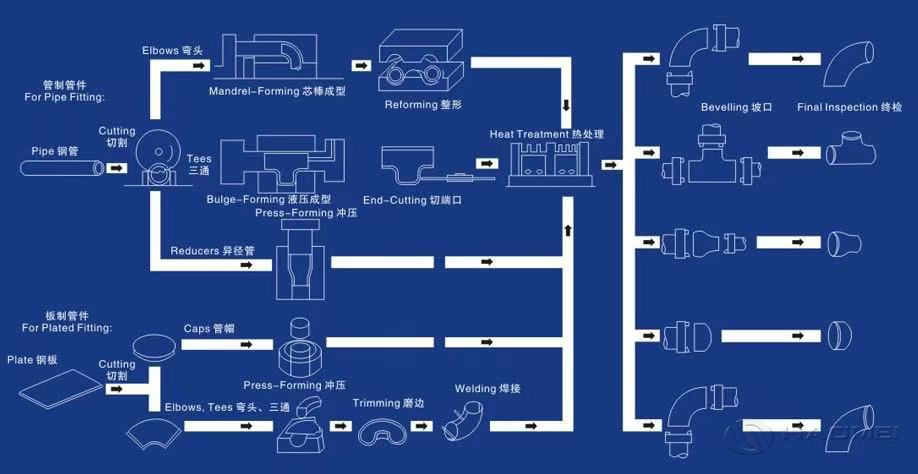Aluminum Tubing and Fittings
2025-04-17 14:51:50
Professional Aluminum Tubing and Fittings For Custom Projects
Aluminum pipes and fittings are a popular choice for a wide range of industrial applications. Aluminum is durable, affordable, and resistant to corrosion. Other benefits of aluminum fittings are that the material is lightweight, effective in extreme temperatures, and thermal- and electric-conductive.
What is aluminum Tubing fitting?
Aluminum Tubing fittings connect with aluminum pipe for secure, leak-free connections. Most aluminum-to-aluminum pipe threads bind together quickly and permanently. Aluminum, known for its corrosion resistance, is lighter weight than steel or copper. These fittings adapt to indoor and outdoor applications including plumbing, racks and railings, and compressed air systems. Aluminum pipe fittings come in a variety of sizes and shapes.

Aluminum pipe fittings connect with aluminum pipe for secure, leak-free connections. Most aluminum-to-aluminum pipe threads bind together quickly and permanently.Aluminum pipe fittings connect with aluminum pipe for secure, leak-free connections. Most aluminum-to-aluminum pipe threads bind together quickly and permanently.
Types and specifications
Aluminum flanges
Aluminum flanges are aluminum flange pipe fittings that are usually used at the end of a pipeline to connect with valves, pumps, meters or other equipment. They can provide a detachable interface and can withstand high pressure and temperature. It has several types: aluminum blind flanges, aluminum plate flanges, aluminum slip on flange, aluminum socket weld flange, aluminum threaded flange, aluminum weld neck flanges.

Flange Type | SO,BL, PL,WN,TH,SW,LJ |
Material | 1000-7000 Series |
Size Range | 1/2''-24'' |
Class | 150LBS-2500LBS, PN6-PN40 |
Surface Treatment | Anodized |
Standard | ANSI B16.5,ANSI B16.47,DIN2576,DIN2502,DIN2527,JIS |
Aluminum elbow
Aluminum elbows are pipe fittings used to change the direction of fluid flow in a piping system. They are usually made of aluminum alloys,which has the advantages of light weight, corrosion resistance and affordability.
Aluminum elbows can be divided into many types according to the bending angle and pipe diameter: 90 degree elbow, 45 degree elbow, 180 degree elbow, aluminum long radius elbow, aluminum short radius elbow,etc.


Aluminum reducer
Aluminum reducer is an aluminum pipe fitting used to connect two pipes of different diameters. They are usually made of aluminum because of its light weight, corrosion resistance and low cost. Aluminum reducers can be concentric or eccentric.
Form | Seamless and welded |
Fittings Shape | Elbows, Tees, Reducers, Caps,Nipples |
Size Range | 1/2''-24'' |
Material | 1000-7000 Series |
Wall Thickness | SCH10--SCH160, STD--XXS |
Ends Type | Butt weld |
Surface treatment | Anodized |
Standard | ANSI B16.9, ASTM B361 |

Aluminum Tee
Aluminum tee is a pipe fitting used to divide a main pipe into two or three branch pipes, usually made of aluminum. Aluminum tees can be of three types: straight type, equal diameter elbow type and reducer type.

Aluminum Fittings pipe caps
Aluminum pipe caps, also known as aluminum end caps or aluminum fittings pipe caps, are aluminum accessories designed to seal off the end of metal pipes or other tubular structures. These caps provide sealing and pressure resistance and can be manufactured through extrusion or machining. They come in various sizes and models to accommodate different pipe dimensions and types.

Classification of marine pipe fittings
Connection method: Socket-type pipe fittings are directly nested and connected through the pipe mouth, which is suitable for low-pressure environments; threaded pipe fittings are quickly installed by spiral bite, which is common in small pipes; flange pipe fittings are connected with sealing gaskets by bolts, which are suitable for high-pressure and large-diameter scenes; welded pipe fittings are permanently sealed by welding, which are mostly used for hull structural parts.Functional use: In addition to basic connectors such as elbows and tees, there are also special components such as reducers for reducing diameters, valves for controlling flow, and brackets for fixing pipelines, forming a complete pipeline ecosystem.Material characteristics: Carbon steel is the mainstream with high strength and low cost, stainless steel is used in seawater systems with its corrosion resistance, and copper alloys are outstanding in heat exchange equipment. Aluminum pipe fittings, with their light weight and high strength, have emerged in the lightweight process of ships




